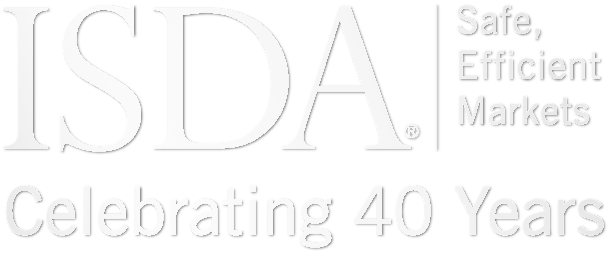
ISDA Chief Executive Officer Scott O'Malia offers informal comments on important OTC derivatives issues in derivatiViews, reflecting ISDA's long-held commitment to making the market safer and more efficient.
One of the topics at our upcoming regional updates is “ISDA Documentation: Evolving in the Face of Change.” A combination of ISDA’s in-house legal team, outside counsel and experts from our member firms will discuss the ways in which our documentation is likely to change in the near term.
The evolving bit is nothing new. ISDA documentation has always been modified as necessary to reflect market, legal and regulatory developments. What is unprecedented is the sheer volume and scope of change that the industry potentially faces from regulatory initiatives around the world. When all is said and done, it will probably be the most comprehensive set of changes since European monetary union, when ISDA’s innovative protocol approach to amending documentation was first utilized.
A reporter learns to identify the “who, what, when, where, why and how” of any potential story. That is also a useful framework for thinking about likely changes to ISDA documentation. Unfortunately, we only know the “who, how and why” at this point. ISDA (the “who”) expects to develop a standardized set of amendments, implemented to the extent possible through a protocol (the “how”), in order to allow derivatives users around the world to make necessary changes to comply with new regulatory requirements (the “why”).
What’s not known yet are the “where, what and when.” Agencies in the US are still working their way through the numerous rules required to implement provisions of the Dodd-Frank Act. The European Parliament must first enact changes to market infrastructure and then turn to consideration of changes to how derivatives are traded. As we recently wrote in derivatiViews, regulators in the Asia Pacific region are considering their approaches to clearinghouses and repositories. Regulators are focused on the G20’s 2009 declaration that changes should be in place by the end of 2012, but with little more than a year to go, the list of what remains to be done is a long one.
As greater clarity is provided, ISDA stands ready to make the necessary changes to its documents. One recent initiative, undertaken jointly with the Futures Industry Association, was to produce a standardized document to facilitate customer clearing. It’s the work product of a group that included a cross-section of both buy- and sell-side participants. Our effort in this area continues through a joint working group to develop additional features to make the process of clearing a trade as seamless as possible and enhance clearing clarity. And, of course, we will make appropriate adjustments to the document to reflect final rules regarding client clearing.
Despite the significant market input into that document, we find ourselves having to focus efforts on defending the terms of that document from regulatory uncertainty, primarily over a set of provisions that are completely optional, only to be included in the case of agreement by the parties. ISDA will comment on the recent CFTC release, particularly because the right of parties to choose the terms of their agreement is so important. The interactions at the July CFTC meeting at which the proposal was approved made it clear that this will be a topic of substantial debate, a debate we welcome.
Change is a constant in the financial world. One of ISDA’s successes has been its ability to adapt its documentation as change occurs, and we expect to continue that success in the months and years ahead. In the meantime, ISDA has already been in touch with its members about how we can ease the transition to the new regulatory environment that the industry faces, and we are eager to hear suggestions from readers on this issue.
Latest
Steps to a Vibrant Derivatives Market: SOM Remarks
Steps to a Vibrant and Resilient Derivatives Market December 4, 2025 Remarks at the Mediterranean Partnership of Securities Regulators Scott O’Malia ISDA Chief Executive Officer Good afternoon and thank you to the Mediterranean Partnership of Securities Regulators (MPSR) for...
ISDA Response to BoE on Gilt Market Resilience
On November 28, ISDA responded to the Bank of England’s discussion paper on gilt market resilience. ISDA encourages the Bank of England, before introducing any significant policy changes that would affect the functioning of the gilt repo market, to consider...
Addressing Termination Troubles
When Enron announced a shock $618 million loss on October 16, 2001, it took a further 47 days until it filed for bankruptcy. For Bear Stearns, it took 266 days between its bailout of a structured credit fund run by...
ISDA In Review – November 2025
A compendium of links to new documents, research papers, press releases and comment letters published by ISDA in November 2025.



